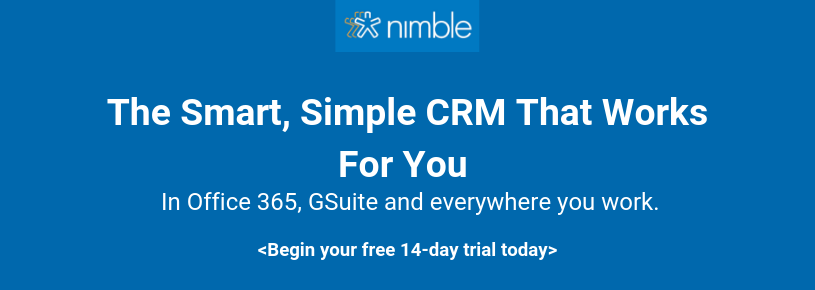Software as a service (SaaS) is not a particularly complicated product to sell, especially in today’s digital day and age. But it is a somewhat complicated product to keep selling. Lead generation, conversion, and above all else, customer retention – can give SaaS leaders a chronic headache.
Stuck in between acquiring new customers and renewing old subscriptions, these companies don’t have much time for strategic thinking. They have only one chance for growth — to keep selling at a good enough rate to be able to beat their competitors and stay on the market.
But what rate is good enough?
And, even more importantly, how can SaaS companies stay on top of it?
The following metrics are crucial for the steady growth of any company, but they can be of exceptional help to aspiring SaaS businesses:
Qualified Marketing Traffic
As a pre-step to a sales pipeline, traffic generation can make or break your efforts to acquire new customers. To sell more, you need a steady influx of visitors to your website. The problem is, it’s not only qualified leads that visit your web address. Your customers do it too.
This is especially true for SaaS companies that provide in-cloud solutions.
Every time they want to log in, your existing customers need to revisit your website. This means that your traffic will keep increasing along with the number of your active users, which may give you a false impression that your lead generation campaigns are making progress.
Not only do you need to track your website traffic, but you also need to know where it is coming from. Dive deeper into analytics to differentiate returning customers from returning leads and first-time visitors, and you’ll have a clear picture of what needs to be improved.
Leads by Lifecycle Stage
Let’s focus on those returning leads and first-time visitors for a second.
How do you know their conversion potential?
Not all leads are equal. While some of them are one decision away from subscribing, others are still learning about your product. And there is a third group; those who are still comparing your offer to your competitors’. Of course, each type of lead requires a different approach.
Leads who are not ready to buy yet should be pushed further down the sales pipeline with some help of content marketing. Typically, these leads turn into customers thanks to high-quality eBooks. At this stage, addressing them with a sales pitch directly is generally not a good idea.
Unlike marketing leads, sales leads should be approached with a direct follow-up.
So, before you opt for one of the two approaches, you need to know at which lifecycle stage your lead is currently stuck, as well as whether or not it is a qualified lead at all. This will not only help you convert more prospects in less time, but it will also save you tons of resources.
Lead-to-Customer Rate
Another way to find out whether or not your lead generation and sales strategy are working is to start measuring your lead-to-customer rate. This metric is fairly simple to calculate, presuming you keep track of the number of your leads and count your customers on a regular basis.
Why is this metric important?
Because, if you don’t know how many leads your marketing team and salespeople actually convert in a certain timeframe, you’ll have no way of telling whether or not you have any potential for growth. Having a bad lead-to customer ratio is a good indicator that you must change something.
Customer Acquisition Cost
Then there is the question of acquisition versus retention.
Does it make more sense for your SaaS business to focus its time, money, and creative energy on new leads or existing customers? In an ideal world, they would be of equal importance. Unfortunately, modern-day SaaS businesses are often forced to choose where to allocate their resources.
That’s why you should start measuring the cost of getting a new customer.
Later we’ll talk about customer lifetime value as a complementary metric. Together, they will help you determine whether or not it makes sense to spend so much money on customer acquisition. Until then, you need to get a better understanding of your marketing and sales expenses.
Customer Lifetime Value
If your customer acquisition costs are steep, then you have to make sure that attracting prospects, nurturing new leads, and converting them into paying customers will eventually pay off. This return on investment can be calculated if you also measure your customers’ lifetime value.
Essentially, this is how much money an average customer gives to your company.
This metric is crucial for most SaaS companies.
If you operate on a subscription-based model too, then you’ll understand why. When customers are renewing their subscriptions one billing cycle after another, it may actually make sense spending a little extra on the acquisition. Or if they were really expensive, it pays off to retain them.
Customer Engagement Score
Do you know what your customers like about your product?
This metric will help you understand their user behavior, which is crucial for a number of things. Using this insight, you’ll be able to make your product even better in the future. You’ll also know who to target, which features to highlight in your marketing campaigns, and how to price them.
But maybe even more importantly, you’ll know how engaging your product is.
If your customers start leaving you tomorrow, you’ll have a better understanding of why they’ve decided to churn. Is your customer service off? Or is it that your product is not intuitive and interactive enough to make them want to use it more often? If so, you need to know why.
Customer Health Score
Besides, you can use your customer engagement score to classify your customers based on how satisfied they are. If they are spending less and less time interacting with your product, it means that something is wrong. If you catch them on time, these subtle signals can help you avoid churn.
Measuring customer health score is about being proactive.
If your customers are getting frustrated, it’s better to know that before they stop paying.

Customer Churn
Unfortunately, you need to measure your customer churn rate too.
Even the most successful businesses have churning customers, so don’t despair. As long as this rate is low and it’s not increasing, you have nothing to worry about. Of course, you’ll want to know why your customers are deciding to leave, so create an online quiz and just ask them.
Much like lead quizzes, customer surveys can help you learn more about your audience’s needs, pain points, and preferences. This is all useful information that you can use for improving your product and honing your marketing campaigns and sales strategies. And it’s simple to do.
The only thing you need is a good quiz maker.
Conclusion
Measuring things like customer acquisition costs, engagement scores, and customer retention rates can help you stay one step ahead of everyone else. You’ll know where your company is at every moment and have complete control over what is going to happen in the future.
On markets as volatile as SaaS, knowledge is key to success.


